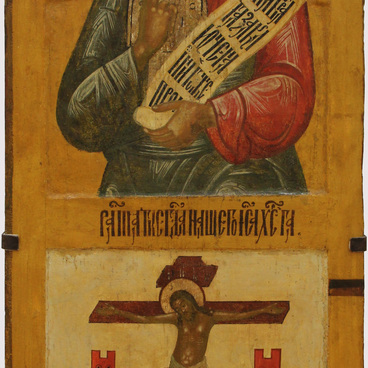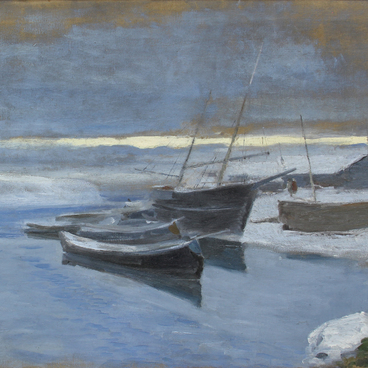The prophet Habakkuk lived in the 7th century BC, he is mentioned in the Old Testament. Little is said about him, it is assumed that Habakkuk was a temple preacher. He predicted the destruction of the Jerusalem Temple during the assault of Emperor Titus’ Roman troops and the capture of the Jews in Babylonia under King Nebuchadnezzar II. The Old Testament also contains his text – The Book of Habakkuk. It consists of three parts and is written in the form of a dialogue between God and Habakkuk himself.
On icons the prophet was usually depicted with a scroll — there were written phrases from his Book. For this icon the painters used a special font – Cyrillic calligraphy. Words in such a font merged into a single line, and if there were free spaces left, they were filled with monograms and symbols.
On icons the prophet was usually depicted with a scroll — there were written phrases from his Book. For this icon the painters used a special font – Cyrillic calligraphy. Words in such a font merged into a single line, and if there were free spaces left, they were filled with monograms and symbols.


